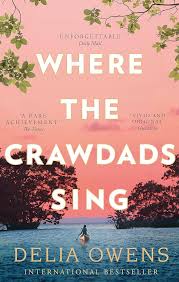35. The Compass
byThe Compass takes center stage in Kya’s life during July 1969, marking a period of emotional reflection and personal achievement. Kya receives a copy of The Eastern Seacoast Birds, a book she had contributed to with a painting of a herring gull, now immortalized on the cover. Elated by this recognition, she decides to take the book to her favorite oak clearing, a place where she often seeks out mushrooms, perhaps in an attempt to reconnect with the simpler parts of her life. While at the clearing, Kya stumbles upon an old milk carton, which, when opened, reveals a brass-cased, army-issued compass accompanied by a note from Tate. The compass, once belonging to Tate’s grandfather who fought in World War I, is not just a functional tool for navigation. To Kya, it becomes a potent symbol of direction, especially during moments when the path ahead seems unclear. The compass represents Tate’s love and the stability that Kya once found in him—offering her comfort and reminding her of the guidance he once provided when she was lost, both literally and figuratively.
As she reads Tate’s heartfelt note, Kya is swept up by memories of their shared past, reflecting on the tenderness of their earlier days together. She recalls how Tate would guide her through difficult storms, not only teaching her practical survival skills like reading, but also nurturing her intellectual growth. Their relationship blossomed, filled with mutual affection and shared experiences, marking some of the happiest moments of Kya’s life. However, these fond memories are tainted by the emotional scars left behind by Tate’s abandonment. Despite the depth of her feelings for him, Kya struggles to fully trust him again, unsure if she can face the possibility of another heartbreak. The pain of betrayal still looms large, preventing her from fully embracing the affection that Tate has once again offered. The fluctuating emotions within Kya mirror the erratic movements of fireflies in the marsh, unpredictable and fleeting. Jodie, her brother, encourages her to consider opening her heart to Tate again, but Kya remains hesitant, caught between longing for the past and the fear of more pain.
Kya, trying to reconcile her inner turmoil, takes the compass and ventures into the foggy estuaries, hoping to find solace in the peaceful, untouched corners of the swamp. Her goal is to find rare flowers, but there is also a subconscious desire to encounter Tate in the stillness of the morning. The fog envelops her, adding a sense of mystery and uncertainty to the scene, much like the confusion she feels in her heart. Her exploration of the estuaries, filled with muted sounds and the haunting beauty of the marsh, contrasts with the emotional chaos Kya experiences. As she walks, every step she takes seems to be a search for clarity, a way to untangle the conflicting feelings she has toward Tate. Her mind drifts back to memories of their past, and the anticipation of possibly encountering him seems to mirror her desire for closure. The fog seems to hold the same weight as the emotional fog in her life, where past wounds have yet to fully heal, and the future remains uncertain. The compass, while offering direction in the physical world, stands as a reminder that Kya’s emotional journey is far more complex. The more she walks, the more she comes to realize that while she can chart a course through the swamp, finding a way through her tangled emotions will require a different kind of navigation—one that only time and personal growth can provide.
Kya’s venture into the mist, driven by both her search for rare flowers and her desire for clarity, symbolizes the ongoing conflict within her. She seeks both peace and answers, but they are elusive, hidden in the fog of her emotions. The compass represents a tangible connection to her past with Tate, yet it is also a reminder of the uncertainties that still cloud her future. This chapter poignantly illustrates Kya’s struggle to reconcile the love she feels with the fear and pain of her past, suggesting that finding true peace in her heart will be a journey that cannot be rushed. The deeper themes of emotional healing and trust are woven throughout, showing Kya’s growth and the internal battles she must face to move forward. This chapter not only explores Kya’s relationship with Tate but also emphasizes the broader human experience of navigating the complexities of love, loss, and personal growth.


